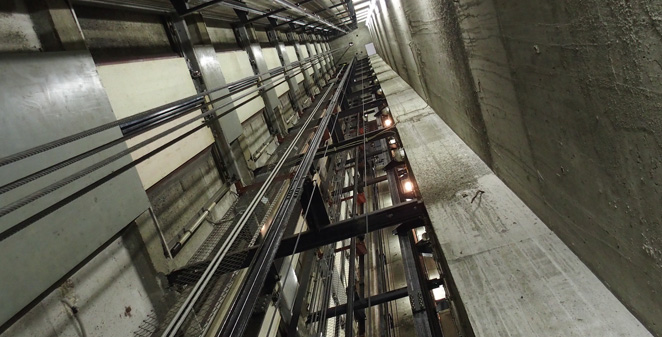Most elevators have ropes of some kind. For low-rise applications, such as buildings up to four floors, hydraulic jacks are used to move the elevators, which can be in-ground or above ground, telescopic or single stage. They are ideal for around 70 feet of travel, which is about a few floors.

For more than that, you will need a roped system. However, when you think of elevator ropes, don’t think of the ones your coach made you climb in gym class.
Modern elevator ropes are crafted of steel and other composites and are highly engineered. Instead of single wires, they are comprised of multiple strands of many sizes that are wrapped together. In fact, a typical cable or rope may have more than 150 strands of wire to provide flexible and lifelong service.
Multiple wire strands increase the life of the cable, providing it with enough flexibility for the job. When running a cable over a pulley wheel or sheave, the wire portion on the sheave utilizes a shorter trip than that of the outside. This stretching creates weakness for a single strand over time. That’s why elevator ropes have to be extremely flexible and strong.
The types of rope used in any particular elevator will vary, depending on the job they have to perform. Following are some of the most common types of ropes you will find in your local elevators:
1. Hoisting
Hoisting ropes are similar to what you see on TV and in the movies, used to suspend the cab and allow the car to go up and down. These also encompass the cables used as counterweights, as both the elevator and counterweights are within the same system. Counterweights counter the weight of the loaded car so it doesn’t take as much effort to move it up and down.
In high rises, high-strength ropes are used because of the required speeds, with many accelerating as much as 45 miles per hour.
2. Governor
Governor ropes are part of elevator safety systems in the hoistway or overhead space. If an elevator car were to start falling or rising too quickly, the governor rope would trigger the safety on the car frame and bring the car to a stop. The governor rope is extremely important, as the entire safety system relies on it.
3. Compensating
The cables and ropes required to move an elevator are all very heavy, especially in high rises and skyscrapers. For instance, a one-inch elevator cable weighs 1.85 pounds per foot. That weight certainly adds up, as that cable makes many trips up and down the hoistway. The compensating ropes, then, are designed to “compensate” for the weight of the hoisting ropes either on the car or counterweight side.
No matter what rope is used in any given elevator system, the bottom line is that it must be in optimal working condition at all times. That means the ropes have to be inspected often and thoroughly for proper tension, wear patterns, diameter, rusting, pitting, breaks in strands, proper lubrication, connections and more.
To learn more about what ropes Mowrey Elevator installs, repairs and inspects, contact us today!
